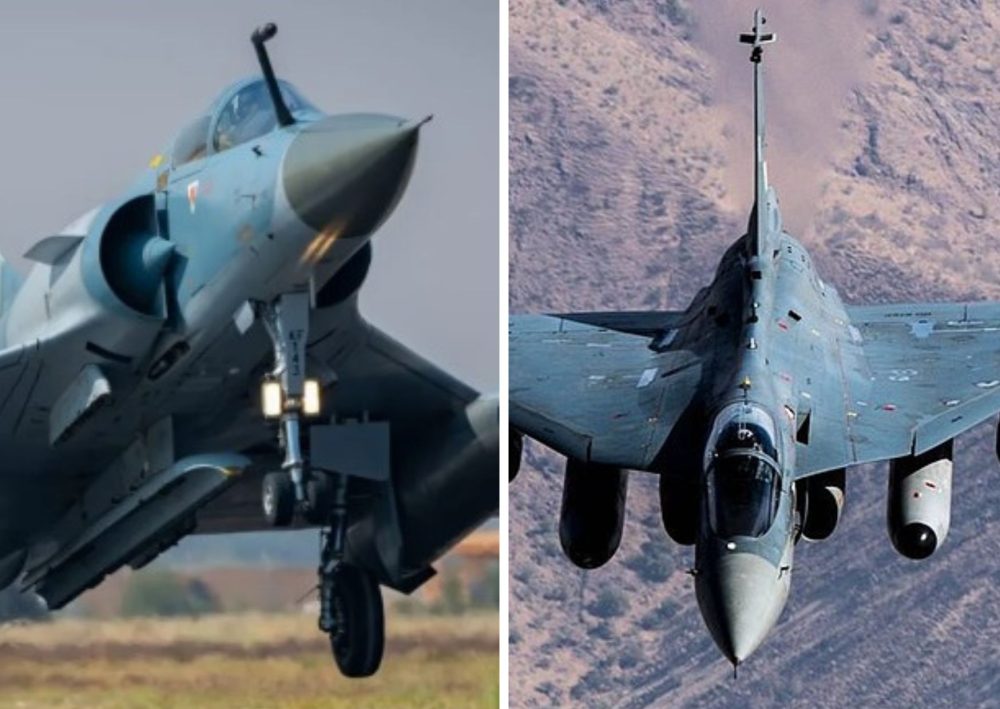SOURCE: AFI


The Indian Air Force (IAF) faces a dilemma: opting for used Dassault Mirage 2000-5 fighter jets from Qatar at a seemingly attractive price of $66.25 million each, or acquiring brand new, indigenous Tejas Mk1A light combat aircraft at $43 million apiece. While the sticker price of the Mirages seems lower, a closer look reveals a different story.
The Mirage 2000-5 fighter jets, offered by Qatar, are priced significantly higher than the Tejas Mk1A jets. At $66.25 million per unit, the Mirage 2000-5 jets come with a hefty price tag, especially considering that they are used aircraft. The Tejas Mk1A jets, on the other hand, are available at $43 million per unit, offering a more economical option for the IAF.
Furthermore, the Tejas Mk1A jets come with a 40-year airframe life, ensuring long-term service and durability. In contrast, the used Qatari fleet of Mirage 2000-5 jets have only 30% of their airframe life remaining, which translates to less than 10 years of operational service. This significant difference in operational lifespan makes the Tejas Mk1A a more cost-effective and sustainable choice in the long run.
Capability Comparison
While cost is a crucial factor, the capabilities of the aircraft play an equally important role in the decision-making process. Here, we compare the key capabilities of the Mirage 2000-5 and the Tejas Mk1A.
- Mirage 2000-5
- Speed and Maneuverability: The Mirage 2000-5 is a proven combat aircraft known for its excellent speed and maneuverability. With a maximum speed of Mach 2.2, it can rapidly respond to aerial threats.
- Avionics and Weapons Systems: The Mirage 2000-5 is equipped with advanced avionics, including multi-mode radar, electronic countermeasures, and a sophisticated weapons system capable of deploying a variety of air-to-air and air-to-ground munitions.
- Combat Proven: The Mirage 2000-5 has a robust combat record, having been used in various conflicts, which speaks to its reliability and effectiveness in real-world scenarios.
- Tejas Mk1A
- Modern Design: The Tejas Mk1A is an indigenously developed light combat aircraft designed with modern warfare requirements in mind. It boasts a maximum speed of Mach 1.8, making it slightly slower than the Mirage 2000-5 but still highly capable.
- Advanced Avionics: The Tejas Mk1A features state-of-the-art avionics, including a multi-mode radar, electronic warfare suite, and beyond-visual-range (BVR) combat capabilities. It also incorporates an Israeli-made Elta EL/M-2052 AESA radar, enhancing its targeting and tracking accuracy.
- Versatility: The Tejas Mk1A is designed for multi-role capabilities, including air superiority, ground attack, and reconnaissance missions. Its versatility makes it a valuable asset for the IAF across various operational scenarios.
The operational lifespan and maintenance requirements of both aircraft are critical factors for the IAF. The Tejas Mk1A, being a new aircraft, offers a longer operational life with potentially lower maintenance costs due to newer technology and parts availability. In contrast, the Mirage 2000-5, with its reduced remaining airframe life, might incur higher maintenance costs and face challenges in sourcing spare parts, given its age and the wear and tear it has already endured.
While the Mirage 2000-5 has a proven track record and impressive capabilities, its high acquisition cost and limited remaining service life make it a less attractive option compared to the Tejas Mk1A.